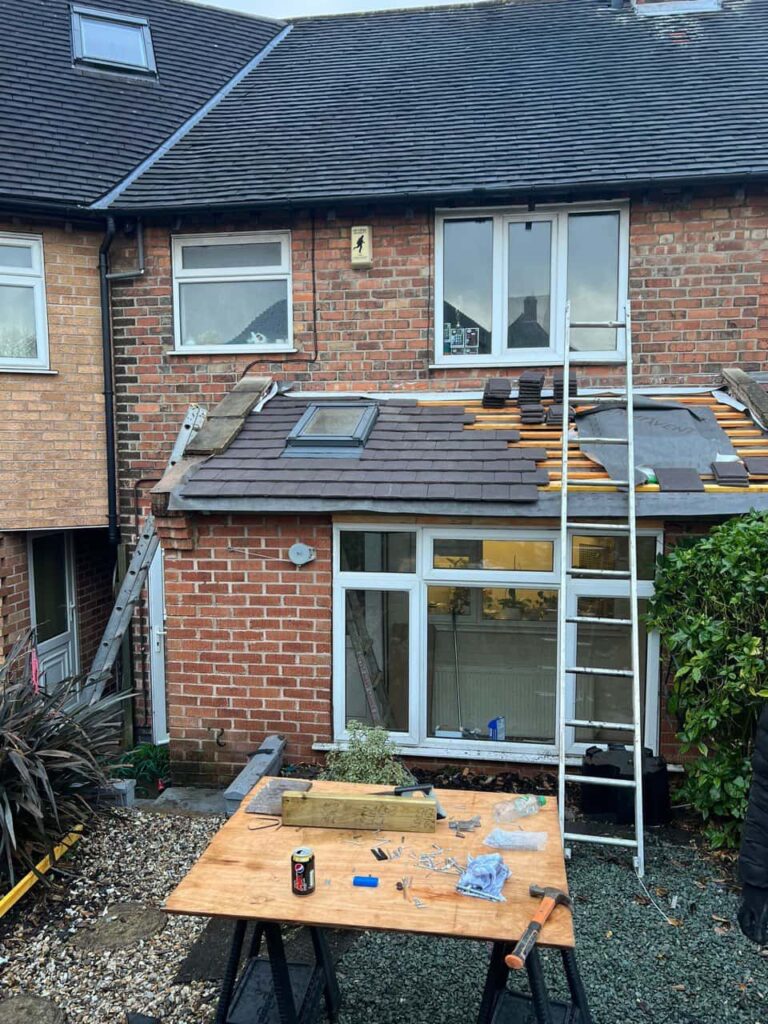Introduction
Slate roofs are known for their strength, elegance, and long lifespan. However, even the most durable roofing material will eventually show signs of ageing and wear. Recognising these signs early can save homeowners from costly repairs or unexpected leaks. At Burgess Hill Roofing Repairs in Burgess Hill, West Sussex, we often help homeowners determine whether their slate roof needs maintenance, repair, or a full replacement.
Understanding when it’s time for a replacement can help maintain both your property’s safety and aesthetic value.
Why Slate Roofs Last So Long
Slate is a natural stone that offers exceptional resilience against harsh weather, making it one of the most long-lasting roofing materials available. With proper installation and maintenance, a slate roof can last well over a century. However, exposure to years of rain, frost, and wind — especially in areas like West Sussex — can eventually lead to deterioration.
That’s why regular inspections and timely intervention are essential.
Key Signs Your Slate Roof May Need Replacing
1. Frequent Slate Breakages or Missing Tiles
One of the most obvious signs that your slate roof is nearing the end of its lifespan is when slates start cracking or slipping more frequently. A few damaged tiles can be repaired, but if breakages are becoming common or widespread, it may indicate that the entire roof is weakening.
Frequent slipping often points to deteriorating fixings or battens underneath, which means that simply replacing individual slates will not provide a lasting solution.
2. Damaged or Corroded Fixings
Traditional slate roofs are held in place with metal nails or hooks. Over time, these fixings can corrode, especially in areas with high humidity or coastal winds. Once the fixings start to fail, slates can slide out of position or become loose, increasing the risk of leaks.
A professional inspection from Burgess Hill Roofing Repairs can identify whether the issue lies in the slate itself or the supporting structure beneath.
3. Water Ingress or Damp Patches
If you notice water stains on your ceilings or walls, the problem could stem from damaged or dislodged slates. Water can seep through even small gaps, especially during heavy rain. Persistent moisture can lead to rot in the roof timbers, weakening the structure and creating more extensive damage.
If your roof leaks even after minor repairs, it may be time to consider a full replacement to ensure long-term protection.
4. Sagging or Uneven Roofline
A slate roof should maintain a smooth, consistent appearance. If parts of the roof appear to be sagging or uneven, it often means that the underlying timber framework has weakened. This could result from prolonged water damage or general ageing of the roof structure.
At this stage, replacing the roof becomes not only a matter of appearance but also safety.
5. Powdering or Flaking Slates
While slate is durable, it can eventually start to flake or develop a powdery surface when it reaches the end of its natural lifespan. This is due to weather erosion and moisture absorption over many decades. Once the stone begins to delaminate, it loses its ability to shed water efficiently, making replacement the only reliable option.
6. Repeated Repairs with Little Improvement
If you find yourself calling for repairs regularly but the same issues keep returning, it’s often more cost-effective and secure to replace the roof altogether. Frequent patchwork repairs can mask deeper structural problems, and over time, the roof may no longer perform as intended.
Burgess Hill Roofing Repairs can conduct a thorough assessment to determine whether continued repairs are worthwhile or if a replacement would be the more practical long-term solution.
7. Age of the Roof
Even the highest-quality slate has a lifespan. If your roof is more than 80–100 years old, it’s worth having it professionally inspected. While individual slates may look fine, the fixings, underlay, and timber supports beneath might have deteriorated.
A professional inspection can help determine whether your roof still has life left in it or if a replacement is necessary to maintain your home’s safety and energy efficiency.
The Importance of Professional Inspection
Determining whether a slate roof needs replacement isn’t always straightforward. What may appear as a minor issue on the surface could hide deeper structural damage underneath.
At Burgess Hill Roofing Repairs, our specialists assess every element of your roof — from slates and flashings to battens and underlay — before recommending any course of action. This ensures that every recommendation is based on accurate findings, not guesswork.
Benefits of Replacing a Slate Roof
Replacing an old or damaged slate roof offers several advantages:
- Enhanced protection – A new roof provides improved resistance against rain, wind, and frost.
- Improved appearance – A clean, uniform slate roof adds immediate kerb appeal.
- Higher property value – Well-maintained roofing is a major asset for potential buyers.
- Lower maintenance costs – A fresh installation reduces the need for frequent repairs.
Conclusion
Slate roofs are a timeless and durable choice, but even they have a limit. Knowing when to replace rather than repair is key to avoiding bigger problems down the line.
If you’re noticing cracked slates, damp patches, or signs of ageing, it’s time to have your roof professionally assessed. Burgess Hill Roofing Repairs in Burgess Hill, West Sussex, provides expert evaluations and replacement services to ensure your property remains safe, attractive, and weather-resistant for years to come.
Call us on: 01444 711 397
Click here to find out more about Burgess Hill Roofing Repairs
Click here to complete our contact form and see how we can help with your roofing needs.

